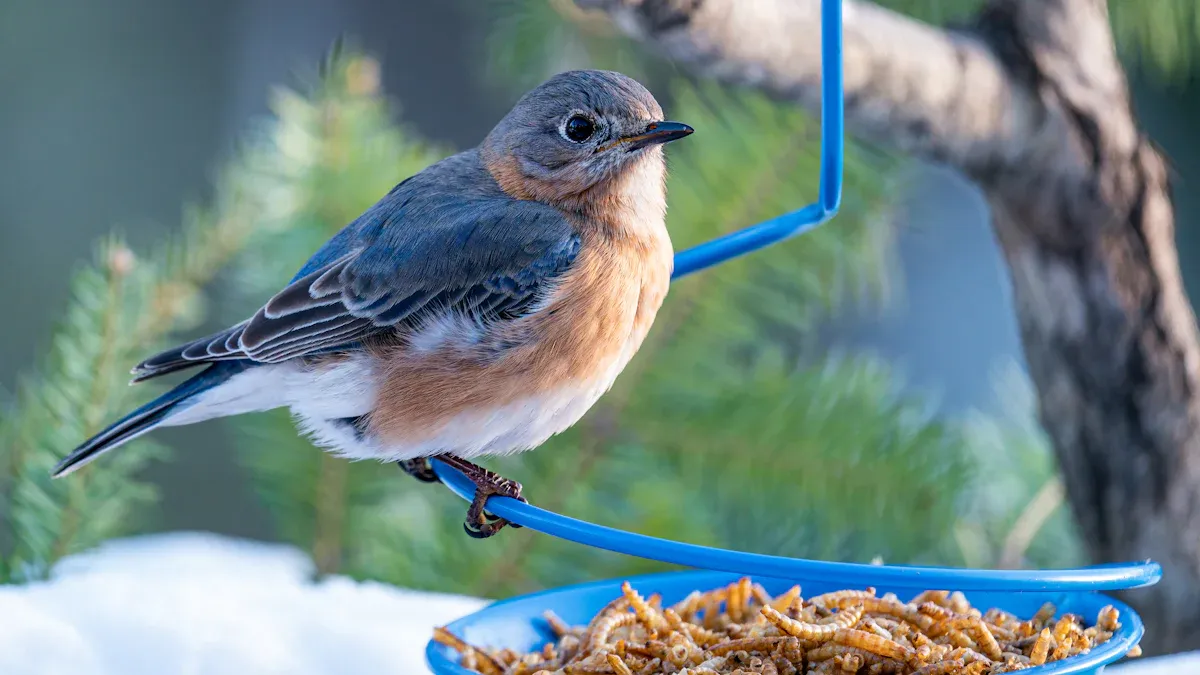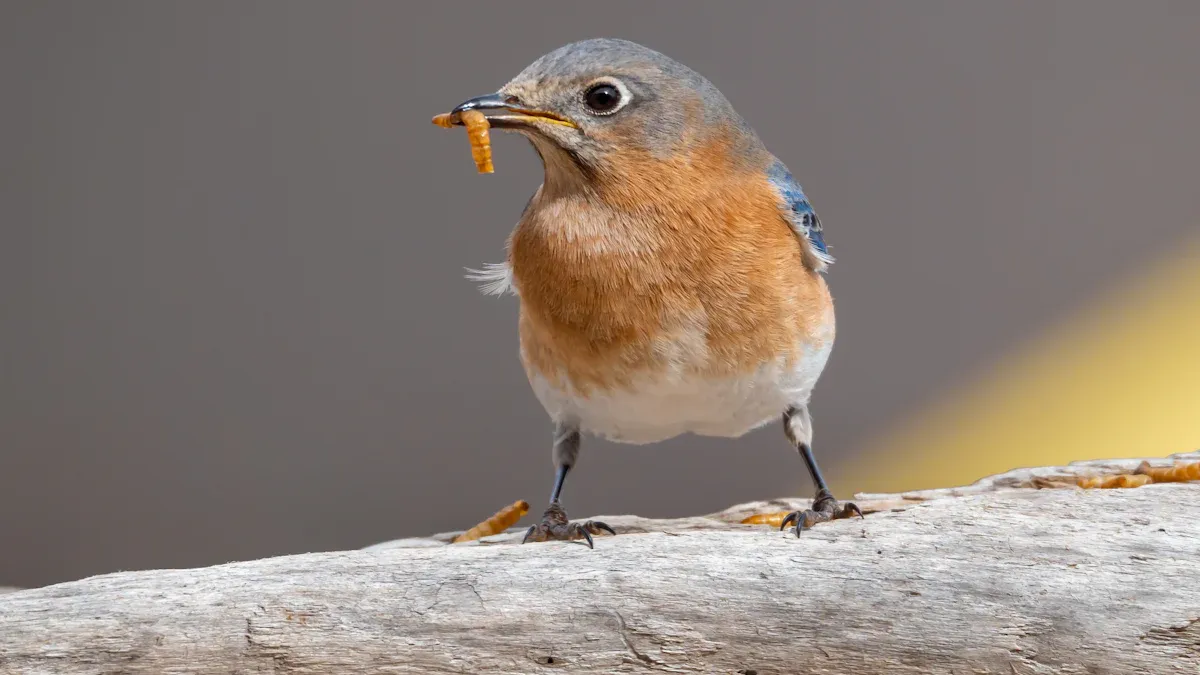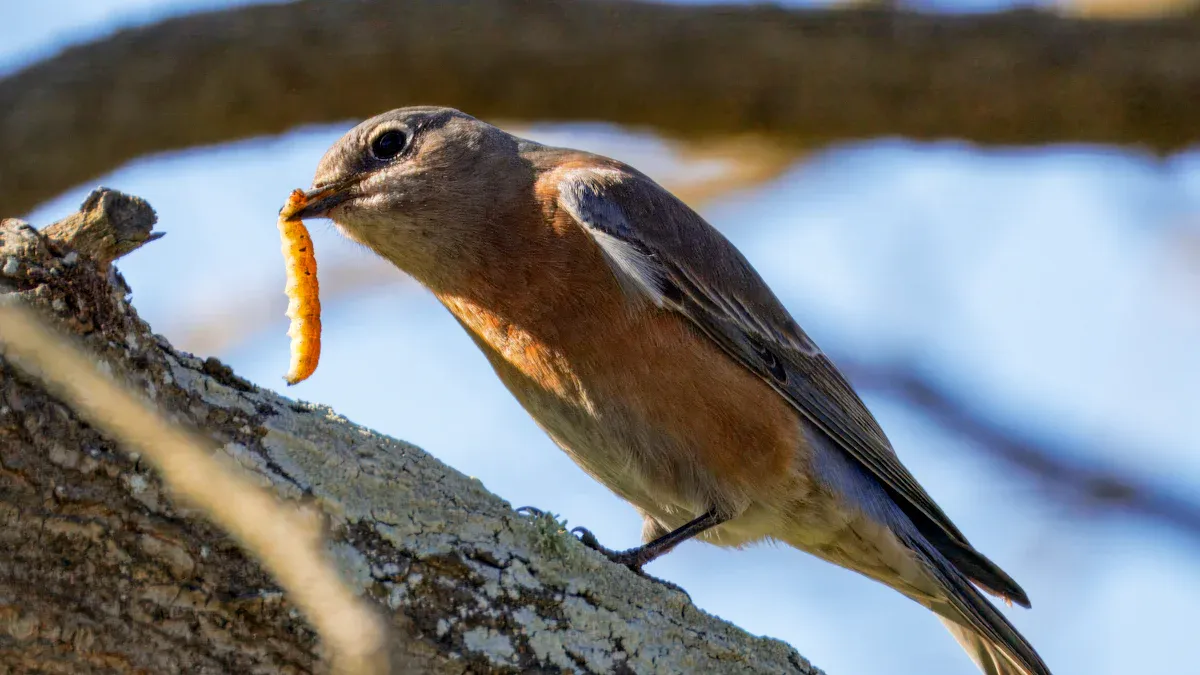
Mealworms for Pet Birds offer a healthy treat in 2025 when owners use them wisely. They provide protein, vitamins, and essential fatty acids that help birds stay active and strong. Experts recommend feeding mealworms in moderation and picking high-quality options. Pet birds thrive when their diet includes variety.
Key Takeaways
- Mealworms provide pet birds with important protein, fats, and minerals that support growth, energy, and overall health.
- Feed mealworms as a treat in moderation, offering a variety of foods to keep birds balanced and happy.
- Store mealworms properly in airtight containers and keep live ones clean and well-fed to ensure safety and freshness.
Mealworms for Pet Birds: Nutrition and Safety

Nutritional Value of Mealworms
Mealworms for Pet Birds offer a powerful nutritional boost. Many bird owners choose them because they are packed with protein and healthy fats. These nutrients help birds grow, build strong muscles, and stay active. The table below shows the main nutritional components found in mealworms and how they benefit pet birds:
| Nutritional Component | Reported Range (%) | Benefit to Pet Birds |
|---|---|---|
| Protein | 44.7 – 68.9 | High protein supports growth and digestibility in pet birds |
| Fat | 29.8 – 43.5 | Significant fat content provides energy and supports health |
| Ash | 3.7 – 5.7 | Mineral content contributes to overall nutrition |
Birds need protein for healthy feathers and strong bodies. The fat in mealworms gives them energy for flying and playing. Minerals from the ash content help with bone strength and overall health. Studies show that mealworms can even replace other protein sources like fish or soybean meal in bird diets. Pet owners can feed mealworms live, dried, or canned, making them a flexible treat for many types of birds.
Potential Risks and How to Avoid Them
Most pet birds enjoy mealworms as a treat, but owners sometimes worry about safety. Some people think dried mealworms might cause health problems, but experts like Dan Gleason explain that birds naturally form and regurgitate pellets of indigestible material. This process is normal and not harmful. Mealworms for Pet Birds do not cause overbreeding or nutritional problems when birds eat a balanced diet. Birds know how to balance their food choices and will not eat only mealworms if other foods are available.
A small risk exists if mealworms carry tapeworms, but this is very rare in pet birds. To make mealworms even safer and more nutritious, some bird owners use a method called “gut loading.” They feed the mealworms a high-calcium diet for 48 hours before giving them to birds. Controlled trials show that this method increases the calcium in mealworms without causing any harm. This helps prevent diseases caused by low calcium, which can be a problem for some pet birds.
Tip: Always store mealworms in an airtight container to keep them fresh and safe for your birds.
Mealworms for Pet Birds are safe and healthy when owners follow these simple steps. Offer them as a treat, not the main food, and make sure your bird eats a variety of foods. With the right care, mealworms can be a tasty and nutritious part of your pet bird’s diet.
Mealworms for Pet Birds: Live vs. Dried

Live Mealworms: Pros and Cons
Live mealworms bring excitement to feeding time. Birds love to chase and catch them, which encourages natural hunting behaviors. These mealworms offer fresh protein and moisture, making them a great choice for hydration. Owners can also control what the mealworms eat before feeding them to birds. This helps boost their nutritional value. For example, keeping mealworms on oatmeal or wheat bran and adding bird hand-feeding powder can make them even healthier.
However, live mealworms need careful handling. They must be kept in clean containers and fed nutritious food. If left in their original packaging, they might eat newspaper or ink, which can harm birds. Live mealworms also require more storage space and regular care to keep them alive and safe.
Tip: Always transfer live mealworms to a clean, airtight container and provide a healthy substrate.
Dried Mealworms: Pros and Cons
Dried mealworms offer convenience. They store easily and last longer than live ones. Many pet owners choose dried mealworms for Pet Birds because they are simple to use and attract a wide range of birds. Dried mealworms contain high levels of protein, fat, and important vitamins and minerals like copper, iron, and B vitamins. These nutrients help birds build strong bodies and support their immune systems.
Still, dried mealworms have some things to watch out for. They may contain antinutritional factors such as oxalic acid and phytic acid, which can lower nutrient absorption. Some birds might have mild allergic reactions. To keep dried mealworms fresh, owners should store them in an airtight container. This keeps them safe and tasty for birds.
| Feature | Live Mealworms | Dried Mealworms |
|---|---|---|
| Storage | Needs care, alive | Easy, long-lasting |
| Nutrition | Fresh, customizable | High, stable |
| Preparation | More work | Ready to use |
| Bird Interest | Stimulates hunting | Attracts many birds |
Mealworms for Pet Birds: Feeding and Storage Tips
How Much and How Often to Feed
Feeding the right amount of mealworms helps pet birds stay healthy and happy. Most birds enjoy mealworms as a treat, not as their main food. For many small to medium-sized birds, a few mealworms each day is enough. Larger birds or those with higher energy needs may eat more. In one study, birds felt satisfied with about 15 grams of mealworms per session, but this amount may change based on the bird’s size and activity level. Owners should watch their birds and adjust the amount if they notice weight gain or loss.
Tip: Offer mealworms during active times, like morning or early afternoon, when birds are most likely to eat.
Mixing mealworms with other foods, such as fruits or seeds, gives birds a balanced diet. Rotate treats to keep feeding time interesting and prevent boredom.
Safe Preparation and Storage
Proper storage keeps mealworms fresh and safe for birds. Use an airtight container to store dried mealworms. Place the container in a cool, dry spot to maintain quality. For live mealworms, choose a glass or plastic container with smooth sides to prevent escapes. Add bedding like wheat bran or cornmeal about three inches deep. Fresh vegetables, such as carrots or potatoes, provide moisture and extra nutrition.
- Clean the container every month to remove waste and dead mealworms.
- Keep the temperature around 75°F for active mealworms, or refrigerate them to slow growth and extend shelf life.
- Always check for mold or bad smells before feeding.
Note: Our dried mealworms come ready to use and attract a variety of garden birds, including robins, blackbirds, and blue tits. Store them in an airtight container for best results.
Mealworms give pet birds a healthy, protein-rich treat when owners feed them in moderation. They support energy and natural foraging, especially in cold weather. Pet birds need a mix of foods for balance. Owners should choose safe, high-quality mealworms and always store them properly for the best results.
FAQ
Can pet birds eat mealworms every day?
Birds can enjoy mealworms as a treat. Owners should not make them the main food. Variety keeps birds healthy and happy.
Which birds like dried mealworms the most?
Robins, blackbirds, and blue tits love dried mealworms. Many garden birds visit feeders for this tasty snack.
How should owners store dried mealworms?
Store dried mealworms in an airtight container. Keep them in a cool, dry place. This keeps them fresh and safe for birds.


